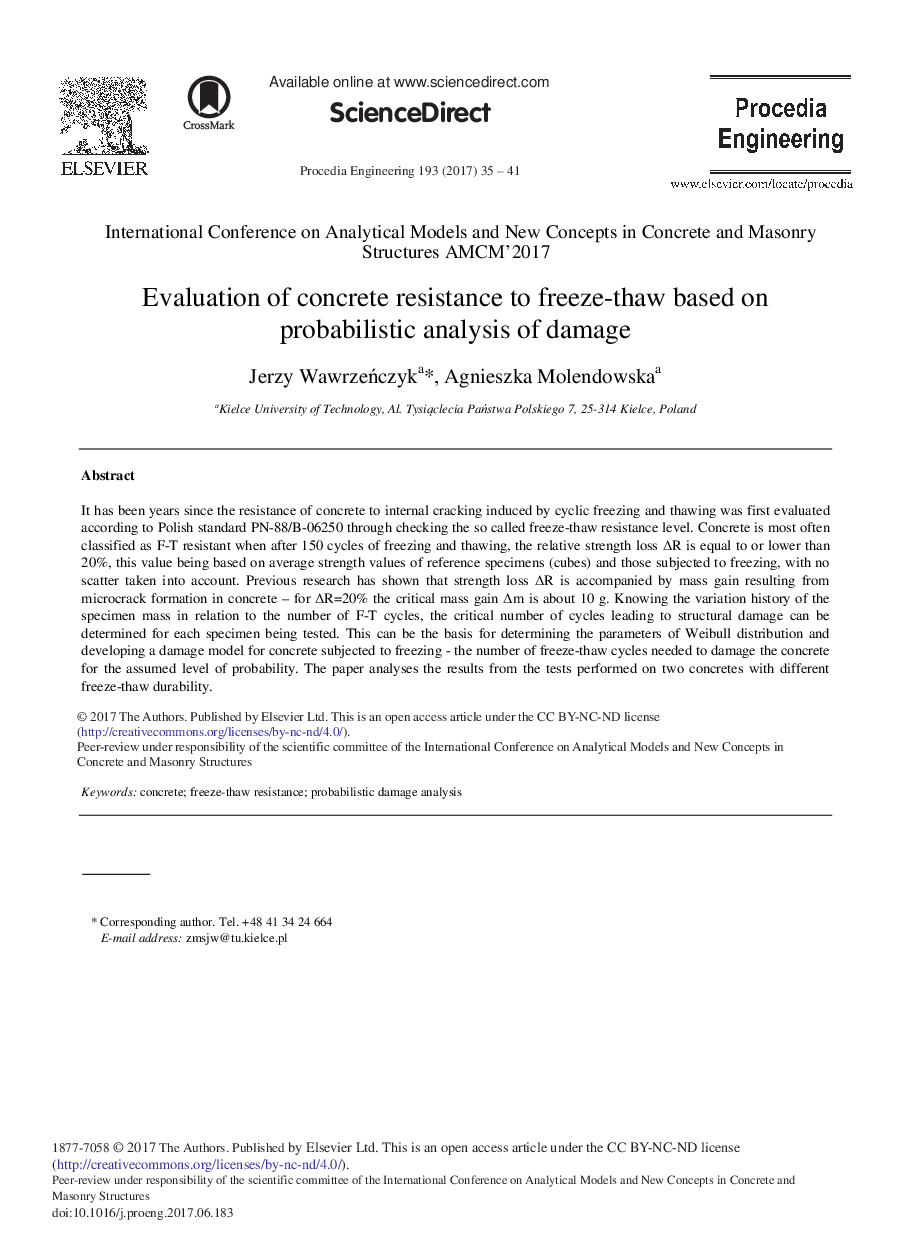| Article ID | Journal | Published Year | Pages | File Type |
|---|---|---|---|---|
| 5027020 | Procedia Engineering | 2017 | 7 Pages |
It has been years since the resistance of concrete to internal cracking induced by cyclic freezing and thawing was first evaluated according to Polish standard PN-88/B-06250 through checking the so called freeze-thaw resistance level. Concrete is most often classified as F-T resistant when after 150 cycles of freezing and thawing, the relative strength loss ÎR is equal to or lower than 20%, this value being based on average strength values of reference specimens (cubes) and those subjected to freezing, with no scatter taken into account. Previous research has shown that strength loss ÎR is accompanied by mass gain resulting from microcrack formation in concrete - for ÎR=20% the critical mass gain Îm is about 10Â g. Knowing the variation history of the specimen mass in relation to the number of F-T cycles, the critical number of cycles leading to structural damage can be determined for each specimen being tested. This can be the basis for determining the parameters of Weibull distribution and developing a damage model for concrete subjected to freezing - the number of freeze-thaw cycles needed to damage the concrete for the assumed level of probability. The paper analyses the results from the tests performed on two concretes with different freeze-thaw durability.
